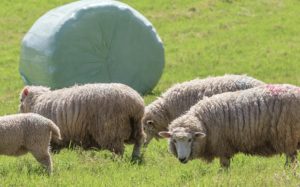A silage-wrap is perhaps the most effective and convenient way to use when storing your unprocessed bales for long-term storage. It complements well with the existing requirements of your unprocessed bales. It also provides the right conditions for the base to convert into the meat. Further, wrapping is also fairly quick and efficient, particularly if you combine this with an automatic thermal bale sealing machine.

Most importantly, a silage making process is not very difficult to understand and implement. Even meat-packing techniques are very easy to learn and follow. This makes it easy for a person who is just learning about the different stages in the production of meat products like lean beef, venison, and pork to jump into the making of silage bales immediately. And those who have already been involved in the business for quite some time now can easily continue with their tasks without needing much assistance from people who know less about the whole process.
In addition to the ease of use and convenience that buying guide provides, a well-defined plan on how to purchase and store your images will help make the whole process more efficient. For example, several companies offer different types of silage-wrap materials that depend on the quality of the ingredients used to produce the images. Therefore, if there are a wide variety of images that you can choose from, you can easily pick the one that you think is best suited to the demands of your particular batch of images.
To make your roll, you will need a large bale made of a tightly woven yet durable material like hay or straw that can be stored tightly inside a sturdy corrugated cardboard box. Next, you will need to gather all the necessary ingredients that can be included in your finished product, like vegetables and herbs. Any edible materials that cannot be included in the main ingredients should also be wrapped separately in a separate mesh sheet or similar material. After gathering all the necessary items, you can start rolling out your silage bale wrap and putting your ingredients on top of it. Be sure to spread them evenly to avoid having unorganized fodder.
To finish off your silage-wrap, you will now need to tie the whole thing with some clear plastic slip. It is important to make sure that the slip is made of strong and durable fabric to withstand all the elements of the environment. A lot of people prefer using duct tape as their method of attaching the slip to their bales. However, this is not advisable for people who raise farm animals such as cattle, horses, sheep, and other farming animals. This is because using duct tape can damage the hide of these animals, especially when they are subjected to varying temperature conditions. On the other hand, you can use several kinds of tying materials like strings, rubber bands, and even ties made from strong nylon fibres.
